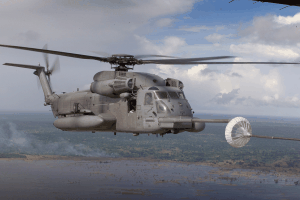Landing Zones* |
 The unit requesting aeromedical evacuation
support is responsible for selecting and properly marking the helicopter
landing zones. The unit requesting aeromedical evacuation
support is responsible for selecting and properly marking the helicopter
landing zones.
Essential requirements for a landing zone are:
Loose objects must be removed from the LZ (ponchos, cartons, tents, etc) as they will be blown around by wind from the main rotor. Obstacles (antennaes, cables, wires, etc.) should be removed from the LZ and approaches. If conditions do not allow for removal of all obstacles, mark them so they are clearly visible to the pilot. At night, red lights are used to mark obstacles. If the tactical situation does not allow for such lighting, notify the pilot of the existing hazard by radio. Identify the LZ, when possible, with a large letter "H" or "Y." If using improvised LZ markers, stake them into the ground firmly. Placing rocks at the edges is usually not enough to keep the ground panel markers from being blown away in the rotor wash. At night, use chemical lights in each of the 4 corners of the LZ. Don't use flare pots or other open flames as they will usually be blown out by the rotor wash. If you have no other option, notify the pilot of the burning materials, keep them more than 3 meters from where the helicopter will land or hover, and secure them so they won't blow over. If all you have at night is a flashlight, stand with your back to the wind, just beyond the edge of the LZ, and point the flashlight back over the LZ, bisecting it in half. The pilot will follow your your flashlight and set the helicopter down in the center of the beam, at the center of the LZ. Keep the flashlight low to the ground and don't point the beam in the pilot's eyes. Indicate the wind direction:
After the helicopter lands:
|
*From Operational Medicine 2001, Health Care in Military Settings, NAVMED P-5139, May 1, 2001, Bureau of Medicine and Surgery, Department of the Navy, 2300 E Street NW, Washington, D.C., 20372-5300
Contents · Introduction · Learning Objectives · Textbook · Lectures · Procedures · Final Exam · Library · Laboratory · Pharmacy · Imaging · Forms · Videos · Search · About the Author · Contact Us
Military Obstetrics & Gynecology
© 2005
Medical Education Division,
Brookside Associates, Ltd.
All rights reserved